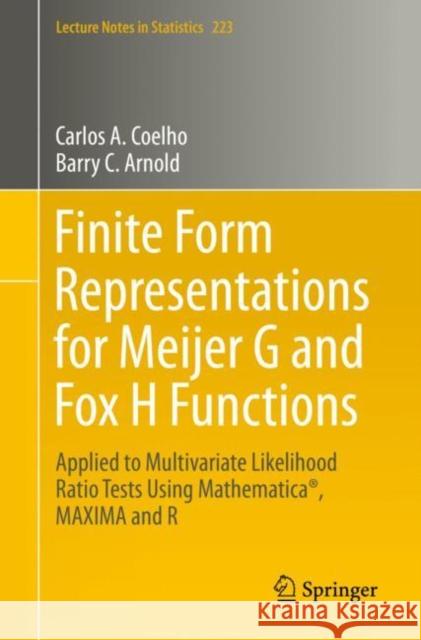Finite Form Representations for Meijer G and Fox H Functions: Applied to Multivariate Likelihood Ratio Tests Using Mathematica(r), Maxima and R » książka
topmenu
Finite Form Representations for Meijer G and Fox H Functions: Applied to Multivariate Likelihood Ratio Tests Using Mathematica(r), Maxima and R
ISBN-13: 9783030287894 / Angielski / Miękka / 2019 / 515 str.
Finite Form Representations for Meijer G and Fox H Functions: Applied to Multivariate Likelihood Ratio Tests Using Mathematica(r), Maxima and R
ISBN-13: 9783030287894 / Angielski / Miękka / 2019 / 515 str.
cena 384,63 zł
(netto: 366,31 VAT: 5%)
Najniższa cena z 30 dni: 382,84 zł
(netto: 366,31 VAT: 5%)
Najniższa cena z 30 dni: 382,84 zł
Termin realizacji zamówienia:
ok. 20 dni roboczych.
ok. 20 dni roboczych.
Darmowa dostawa!
Kategorie:
Kategorie BISAC:
Wydawca:
Springer
Seria wydawnicza:
Język:
Angielski
ISBN-13:
9783030287894
Rok wydania:
2019
Wydanie:
2019
Numer serii:
000013119
Ilość stron:
515
Waga:
0.74 kg
Wymiary:
23.39 x 15.6 x 2.74
Oprawa:
Miękka
Wolumenów:
01
Dodatkowe informacje:
Wydanie ilustrowane











